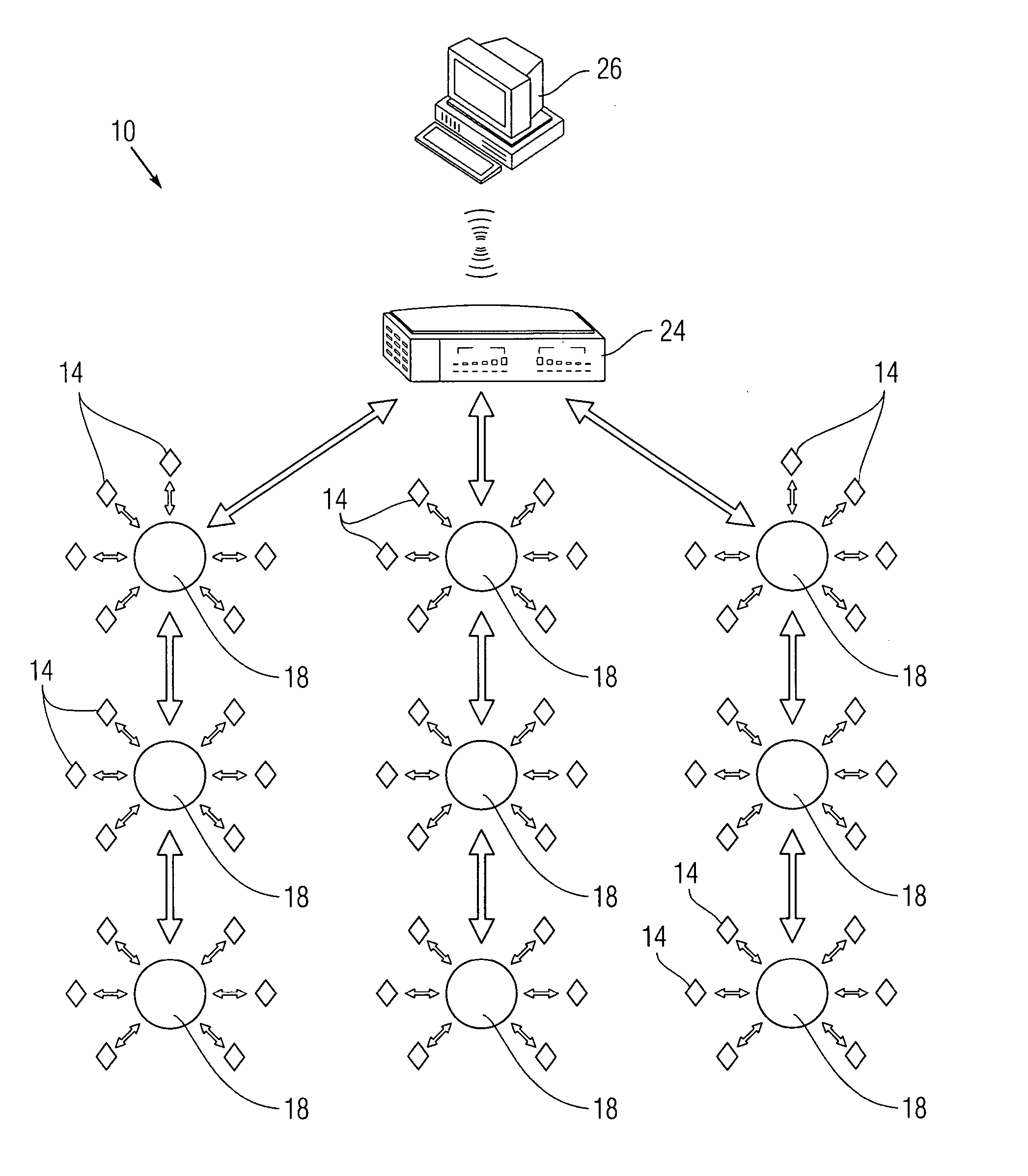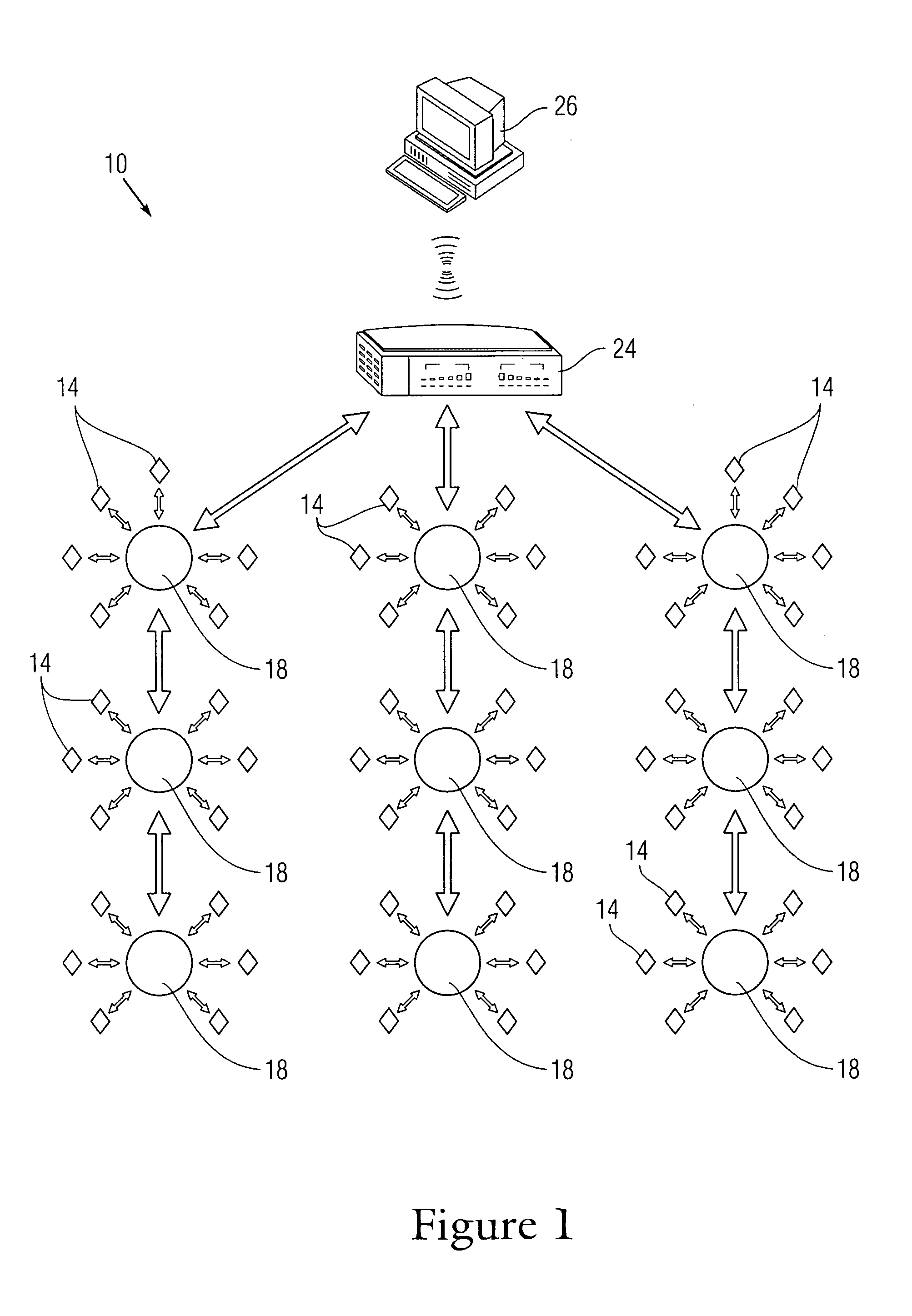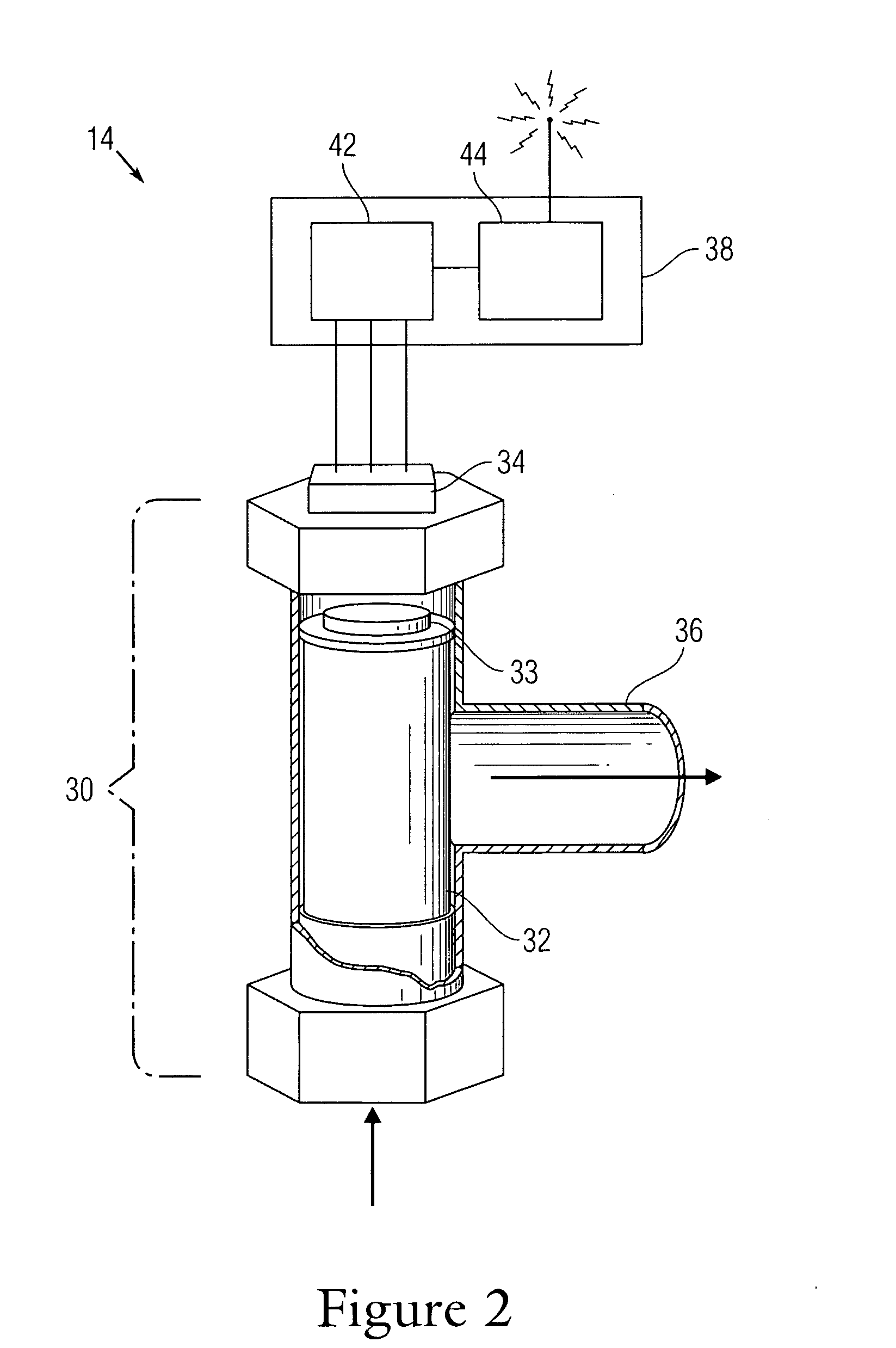Wireless water flow monitoring and leak detection system, and method
a leak detection system and water flow monitoring technology, applied in the field of system and method, can solve the problems of leaking water fixtures, elusive endeavors, and lack of direct economic rewards for individual residents
- Summary
- Abstract
- Description
- Claims
- Application Information
AI Technical Summary
Benefits of technology
Problems solved by technology
Method used
Image
Examples
Embodiment Construction
[0020] Referring to FIG. 1, a wireless water flow monitoring and leak detection system 10 of the present teachings is illustrated. The system 10 can be used in various facilities having a water distribution network including a plurality of water fixtures, such as, for example, multi-unit apartment buildings, condominiums, hospitals, dormitories, commercial office buildings, homes, and the like. In these facilities, water fixtures can include various water using appliances such as sinks, toilets, hot water heaters, clothes washers, bathtubs, and the like.
[0021] The system 10 can include a network of highly-sensitive wireless flow sensor nodes 14 that can periodically detect and store data points in memory corresponding to a flow or no flow condition occurring at a particular water fixture. The system 10 can also include a plurality of coordinator nodes 18 for relaying data and commands, and at least one base station computer 24 that can collect, store, and analyze data, as well as t...
PUM
 Login to View More
Login to View More Abstract
Description
Claims
Application Information
 Login to View More
Login to View More - R&D
- Intellectual Property
- Life Sciences
- Materials
- Tech Scout
- Unparalleled Data Quality
- Higher Quality Content
- 60% Fewer Hallucinations
Browse by: Latest US Patents, China's latest patents, Technical Efficacy Thesaurus, Application Domain, Technology Topic, Popular Technical Reports.
© 2025 PatSnap. All rights reserved.Legal|Privacy policy|Modern Slavery Act Transparency Statement|Sitemap|About US| Contact US: help@patsnap.com



